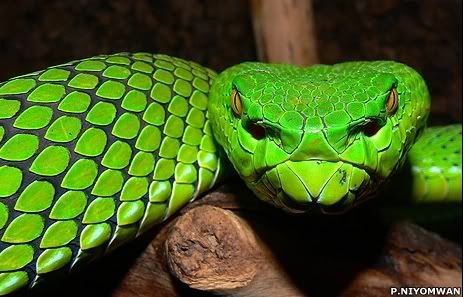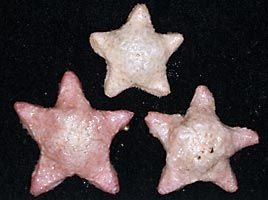I’ve mentioned how many new species of animals keep getting discovered. And recently over a thousand new species were discovered in the Greater Mekong Region of Southeast Asia. Below I’ve included the official announcement from the World Wildlife Fund but you can get more information here.
First Contact in the Greater Mekong reported that among the 1068 species newly identified by science, between 1997 and 2007, were the world’s largest huntsman spider, with a leg span of 30 centimetres, and the startlingly hot pink coloured cyanide-producing “dragon millipede”.
While most species were discovered in the largely unexplored jungles and wetlands, some were found in the most surprising places.
The Laotian rock rat, for example, thought to be extinct 11 million years ago, was first encountered by scientists in a local food market, while the Siamese Peninsula pit viper was found slithering through the rafters of a restaurant in Khao Yai National Park in Thailand.

The findings include 519 plants, 279 fish, 88 frogs, 88 spiders, 46 lizards, 22 snakes, 15 mammals, 4 birds, 4 turtles, 2 salamanders and a toad. The region comprises the six countries through which the Mekong River flows including Cambodia, Lao PDR, Myanmar, Thailand, Vietnam and the southern Chinese province of Yunnan.
It is estimated thousands of new invertebrate species were also discovered during this period, further highlighting the region’s immense biodiversity.
“It doesn’t get any better than this,” said Stuart Chapman, Director of Wolrd Wildlife’s Greater Mekong Program. “We thought discoveries of this scale were confined to the history books. This reaffirms the Greater Mekong’s place on the world map of conservation priorities.”
The report stresses economic development and environmental protection must go hand-in-hand to provide for livelihoods and alleviate poverty, and ensure the survival of the Greater Mekong’s astonishing array of species and natural habitats.
What is urgently needed to protect the biodiversity of the region is a formal, cross-border agreement by the governments of the Greater Mekong.
Sixteen of WWF’s Global 200 ecoregions, critical landscapes of international biological importance, are found in the Greater Mekong. These landscapes are home to an estimated 20,000 species of plant, 1,200 bird species, 800 species of reptiles and amphibians, and 430 mammal species, including Asian elephants, tigers and one of only two populations of the critically endangered Javan rhino in the world.
In addition to rare Irrawaddy dolphins, the Mekong River basin is estimated to house at least 1,300 species of fish, including the Mekong giant catfish, one of the largest freshwater fish in the world.
By length, the Mekong is the richest waterway for biodiversity on the planet, fostering more species per unit area than the Amazon. Many of the species are endemic to the region.
 I haven’t written about conservation in while since much of my readership lately expressed more interest in pets but have been working on the editorial calendar for 2009 so that I cover the topics all of my readers will find interesting…and that keep me happy!
I haven’t written about conservation in while since much of my readership lately expressed more interest in pets but have been working on the editorial calendar for 2009 so that I cover the topics all of my readers will find interesting…and that keep me happy!
